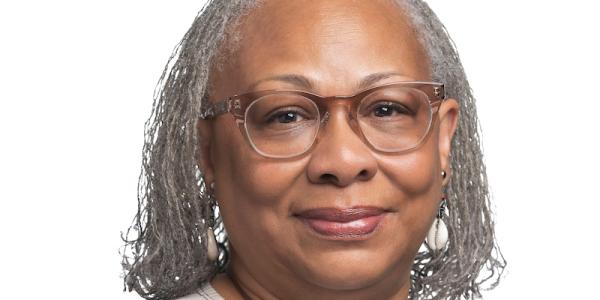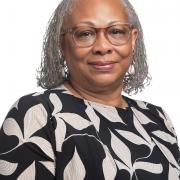From Our President. Pathways to the Profession: Ensuring Women of Color Achieve Their Higher Education Dreams

You are here
In 2020, Dr. Aisha Ray’s challenge to the field to critically examine “ECE workforce preparation programs’ entrenched whiteness and racialization as unique factors in child development, practice, pedagogy, [and] instruction” was a “gauntlet” moment.
Dr. Ray is Professor Emerita of Child Development at Erikson Institute and a Distinguished Fellow at the BUILD Initiative. She has participated in the fields of child development and early education for 50 years. I have known of her for some time, having heard her speak at conferences and having read articles written by her. However, I actually met her in 2014 when she and I both served on the NAEYC Governing Board Nominations Committee. Over a wonderful seafood dinner, we had great conversation and became fast friends.
Over the past several months, Aisha and I have been having conversations about the pathways that early childhood professionals of color, and Black women and men in particular, have taken to enter this field of early childhood education. Interestingly enough, both of our pathways, while different, have been the more traditional route of a “start and stop approach” that many Black women and other women of color find themselves on.
Recent publications and initiatives have highlighted what has long been true: Despite the significance of their work with children and families, early childhood educators are woefully underpaid (and otherwise compensated) across the United States. Educators of color, especially Black and Latino/a early childhood educators, are given the lowest wages in the field. Systematic biases and barriers not only encourage but sustain these inequities. These can be seen in where educators of color tend to work (nonschool-sponsored settings) and with whom they work—infants and toddlers, positions that are typically given much lower wages.
That’s not the whole story though. According to the January 2021 issue of Urban Wire, a blog of the Urban Institute, programs that serve preschool-aged children and/or that are school-sponsored often have credential and degree requirements that many people of color can’t meet “because they lack equitable educational opportunities and access to the same levels of professional development supports.”
I have traveled my educational journey for 32 years—almost as long as I have been in the field. Some would say that is a good example of lifelong learning; however, for me, it was because of the nontraditional route that I took as a working mother: Child Care Apprenticeship in 1975; associate degree in early childhood education in 1981; bachelor of science in cultural foundations of education in 2001; master of science in cultural foundations of education in 2004; master of science in educational leadership in 2007. Throughout this journey, I was often much older than the folks I was in class with.
It should not take 32 years for teachers of color to achieve their higher education dreams.
Women, and some men, of color often find themselves on the same nontraditional pathway that I took: one class at a time, often in the evening or weekends while holding down a job in the early childhood field and raising our own children. There were six years between my apprenticeship certificate and associate degree; 20 years between the associate degree and the bachelor’s degree. Many of the obstacles I encountered were due to a lack of articulation agreements between the community college and universities in Milwaukee at that time, even though I had early childhood leaders like Dom Gullo, Chris Maxwell, and Chip Donahue advocating for me. After my children were older and either in college themselves or starting their careers, I received my final two degrees within six years of each other, while still working full time.
It will take coordinated efforts to address the inequities surrounding early childhood education preparation programs. As Linda Hassan Anderson, chief program officer of the Center for Equity and Inclusion said, “I am a Black woman with a degree, and my experiences have tempered the optimism fostered by my parents about doors opening for people of color with higher education.” She goes on to share, “My academic degrees have not shielded me from encountering the trifecta of racism, classism, and sexism. As a result, I’m concerned about the limits of disjointed strategies when it comes to these issues.”
At the national level, NAEYC is advancing the ideal of professionalizing the field of early childhood education. I am inspired by the groundwork laid by the Power to the Profession and hopeful for the future of the Unifying Framework for the Early Childhood Education Profession. At the writing of this column, we are advocating for early childhood education provisions in the Build Back Better legislation. How will this play out for the women who are early on in their careers? How do we create pathways to quality teaching for programs where most of the staff may not have a bachelor’s degree? How will we eliminate the racial differences in pay and compensation that exist in our field? And how do we do this to meet the dire need for early childhood teachers that many, if not most, programs are experiencing right now?
With the infrastructure and steady, deep supports NAEYC advocates, we have the chance to address these longstanding questions and issues. It should not take 32 years for teachers of color to achieve their higher education dreams.
Best,
Ann
NOTE: The 2020 quotations come from Moving Beyond False Choices for Early Childhood Educators series, which can be accessed at newamerica.org/education-policy/early-elementary-education-policy/moving-beyond-false-choices-early-childhood-educators.
Copyright © 2022 by the National Association for the Education of Young Children. See Permissions and Reprints online at NAEYC.org/resources/permissions.
Current president of NAEYC (National Association for the Education of Young Children)
